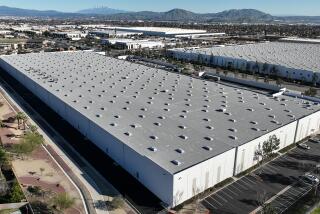THE CHANGING FACE OF DOWNTOWN : Not Every City Needs a Downtown
The word downtown evokes numerous images: skyscrapers . . . specialty shops . . . vacant stores . . . bums . . . exclusive condos . . . urban blight.
But in several South Bay cities, downtown means nothing.
Redondo Beach’s downtown has given way to condominiums; Hawthorne’s has become a mall. Lawndale, Lomita and Carson never had downtowns.
But officials in all five cities say they have not suffered from the lack of a traditional downtown or the community focal point it usually provides. Nor do the five cities want for shopping opportunities or sales tax revenue, the officials say.
King Harbor Focal Point
In Redondo Beach, for example, King Harbor and the pier give residents and visitors a focal point, not to mention rental income and sales tax revenue. The South Bay Galleria, which opened about a year ago, has become the city’s central shopping area, officials said.
Unlike most of the South Bay’s downtowns, King Harbor, developed in the late 1950s and early 1960s, is a success story. It attracts more than 8 million visitors a year, and the city collects about $5 million a year in rent from businesses leasing the city’s property.
Redondo Beach Mayor Barbara J. Doerr said downtowns have traditionally been a city’s link with its past. “But I think we definitely have that in the harbor, because the harbor has always played a key role in the development of the city,” she said. “To me, I think that is the most important link with the past in Redondo. . . .
“But, we don’t have a downtown, and you can’t pretend some other area is.”
What was once the city’s downtown--about 50 acres next to the harbor--was torn down and replaced by condominiums in the 1970s.
High Vacancy Rate
Before the conversion, the downtown had a 30% to 40% vacancy rate and many businesses were struggling, officials said. The city used redevelopment laws and federal money to help developers replace the dilapidated downtown stores with housing. Now, attractive condominiums and apartments occupy the site, bounded by King Harbor, Torrance Boulevard, Catalina and Pacific avenues and the ocean.
Hawthorne’s former downtown also became a redevelopment project--the city’s first. The area along 126th Street, east of Hawthorne Boulevard, is now home to the 840,000-square-foot Hawthorne Plaza shopping mall, which was completed in 1977.
“People here don’t really talk about going ‘downtown.’ We really don’t have that concept,” said Tom Quintana, a city spokesman.
Business Strip
Although Hawthorne--like Lawndale to the south--does not have a downtown as a focal point, the small businesses that line Hawthorne Boulevard in both cities provide the shopping opportunities, and to some extent the ambiance, of traditional downtowns.
Paula Burrier, Lawndale’s director of housing and community development, said some business owners on Hawthorne Boulevard feared that the Galleria, which opened in 1985, would hurt them, but that hasn’t happened.
The city has encouraged older businesses to remain in Lawndale by offering financial and design assistance to spruce up their buildings, Burrier said. Sales taxes, which totaled $1.53 million in 1986, make up one-fourth of the city’s revenues. After a 10% drop in sales taxes in 1979 when a Toyota dealer shut down, increases have been steady.
Farming Town
Lawndale developed as a farming and ranching town in the late 1800s and was not incorporated as a city until 1959. Burrier said the city prides itself on being a small-town, residential community and has never longed for a downtown.
In Carson, the civic center and City Hall complex at Carson Street and Avalon Boulevard provide a similar focus, according to Adolfo Reyes, redevelopment project manager.
The Carson Mall is the the main commercial center, but city officials are concerned about businesses dispersing throughout the city. “It seems that every corner has a little convenience store,” Reyes said.
Although Lomita has never had a major downtown area, two distinct commercial hubs developed in the community as far back as the late 1930s and early ‘40s--one at Lomita Boulevard and Narbonne Avenue, and the other along Pacific Coast Highway near Narbonne.
North, South Lomita
“We used to have what we called a North and South Lomita,” recalled Les Steigh, 72, who, until he sold it 10 years ago operated the feed store his father founded in the city nearly 50 years ago.
Through the years, as land costs have risen along Pacific Coast Highway, many older stores have given way to larger developments. At Lomita Boulevard and Narbonne, however, a small commercial hub remains and a handful of successful stores cater to area residents. Some residents consider the area, which is a zoning potpourri with commercial and residential mixed together, as Lomita’s downtown.
Times staff writers Julio Moran and George Stein contributed to this report.
More to Read
Inside the business of entertainment
The Wide Shot brings you news, analysis and insights on everything from streaming wars to production — and what it all means for the future.
You may occasionally receive promotional content from the Los Angeles Times.









